Features of Soviet washing machines
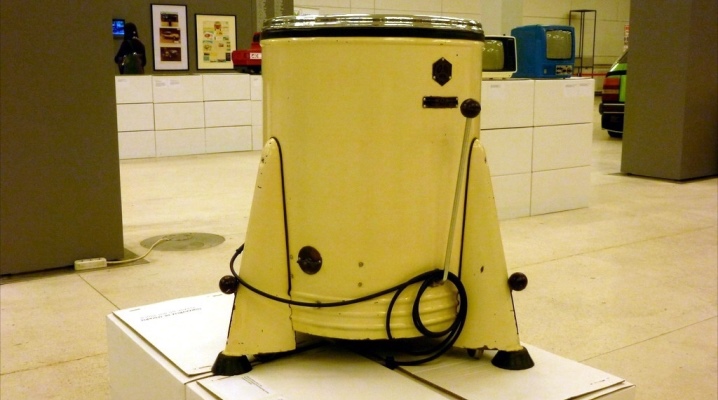
For the first time, washing machines for home use were released at the beginning of the last century in the United States. However, our great-grandmothers for a long time continued to wash dirty linen on the river or in a trough on a wooden board, since American units appeared with us much later. True, they were inaccessible for the overwhelming majority of the population.
Only at the end of the 50s, when the mass production of domestic washing machines was established, our women began to acquire this necessary "helper" in the household.
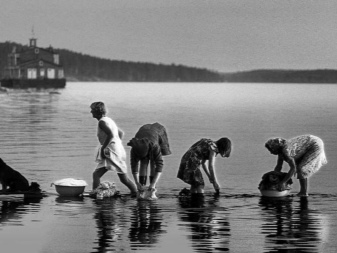

Features, pros and cons
The first enterprise, which saw the light of the Soviet washing machines, was the Riga RES plant. This was in 1950. It should be noted that the models of cars produced in the Baltics in those years were of high quality, and it was easy to repair them in the event of a breakdown.
In the USSR, mainly mechanical and electric washing machines were distributed. Electrical units in the version in which they were produced in the Soviet Union consumed too much energy, even by the standards of the time when, in accordance with government policy, electricity was cheap. In addition, in those years, the development of science and technology had not yet reached the release of reliable automatic mechanisms. Any automatic household device tolerated vibrations and moisture rather poorly, therefore, SMA of that time were extremely short-lived. These days, electronics serve for decades, but then the life of any machine with automation was short. In many ways, the reason for this was the very organization of production, which involved a significant amount of manual labor. As a consequence, this led to a decrease in the reliability of the equipment.
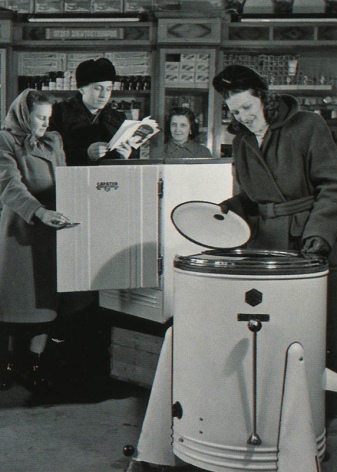
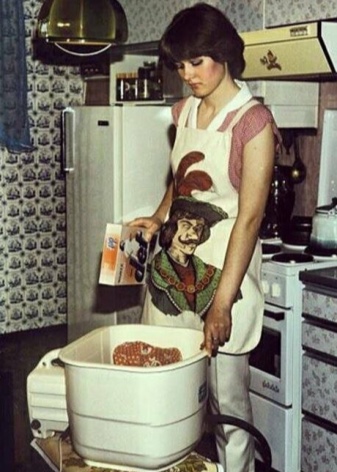
The first mechanical models
Let's take a look at some old-style cars.
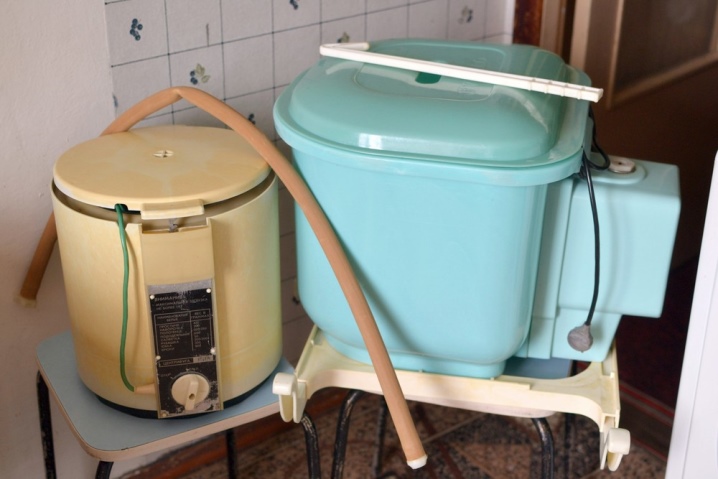
Eaya
This is the very first washing equipment of the Baltic RES plant. This technique had a small circular centrifuge and paddles for mixing water with laundry. This mechanism was used during the washing process, as well as in the process of rinsing the laundry. During the extraction, the tank itself rotated, but the blades remained static. The liquid was removed through small holes in the bottom of the tank.
The washing time directly depended on the density of the laundry, but on average the process took about half an hour, and the push-up took about 3-4 minutes. The user had to manually determine the duration of the equipment.

The lack of a sealed door could be attributed to the disadvantages of mechanics, therefore, during operation, soapy liquid often splashed onto the floor. Another disadvantage of the technique was the absence of a pump for removing dirty water and the absence of a balancing mechanism.
"Oka"
One of the very first SMA in the USSR was the Oka activator type device. This unit did not have a rotating drum, washing was carried out in a stationary vertical tank, rotating blades were attached at the bottom of the container, which mixed the soap solution with the laundry.
This technique was very reliable and served for several warranty periods, since it practically did not break down with proper operation. The only malfunction (however, quite rare) was the leakage of the cleaning solution through the worn out seals.Problems with engine burnout and blade destruction were completely uncharacteristic events.
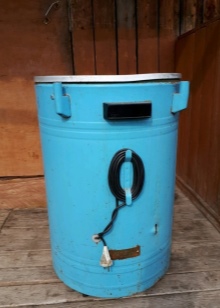
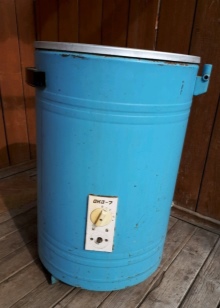

By the way, the machine "Oka" in a more modern version is on sale today.
It costs about 3 thousand rubles.

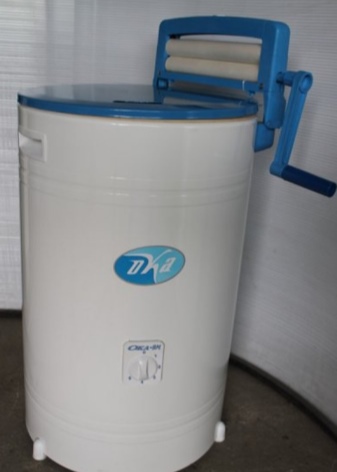
Volga-8
This car has become a real favorite of the housewives of the USSR. And although this technique was not particularly convenient in use, its advantages were its quality factor and high reliability. She could work for decades without problems. But in the event of a breakdown, unfortunately, it was almost impossible to carry out repairs. Such a nuisance, of course, is an undeniable minus.
The "Volga" made it possible to roll up to 1.5 kg of laundry in one run - this volume was washed in a tank for 30 liters of water for 4 minutes. After that, the housewives performed rinsing and spinning, as a rule, manually, since these functions, provided by the manufacturers of the machine, were very unsuccessful and time-consuming to perform. But even such an imperfect technique, Soviet women were very pleased, however, it was not at all easy to acquire it. In times of total scarcity, in order to wait for a purchase, one had to stand in a queue, which sometimes stretched for several years.
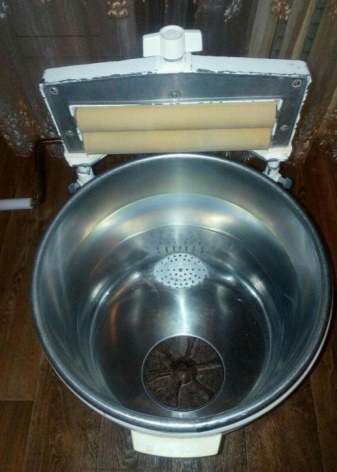
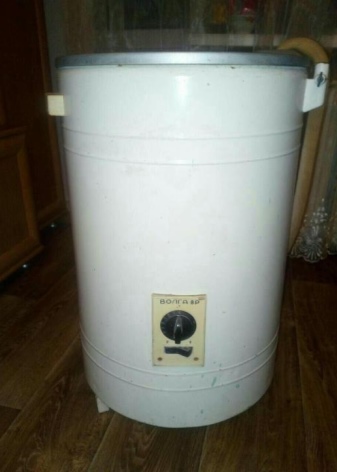
Semiautomatic
Some called the unit "Volga-8" a semiautomatic device, but this could only be done with a stretch. The very first semi-automatic machines were the CM with a centrifuge. The first such model was presented in the second half of the 70s and it was called "Eureka". At that time, its creation was a real breakthrough, given the very modest functionality of its predecessors.
Water in such a machine, as before, had to be poured, preheated to the desired temperature, but the spin was already quite high quality. The washing machine made it possible to process 3 kg of dirty laundry in one go.
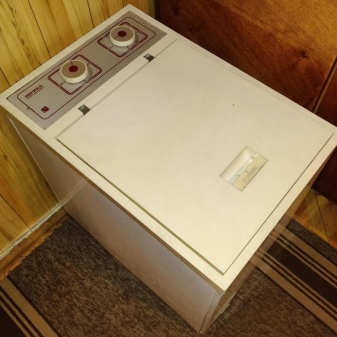
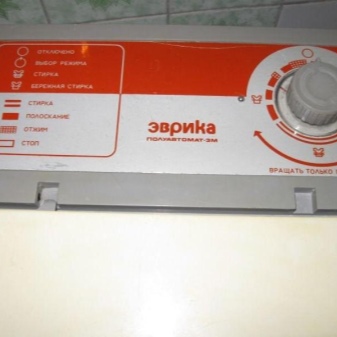
"Eureka" was a drum type SM, not a traditional activator one for that time. This meant that first the laundry had to be loaded into the drum, and then the drum itself had to be installed directly into the machine. Then add hot water and turn on the technique. At the end of the wash, the waste liquid was removed through a hose with a pump, then the machine proceeded to rinse - here it was important to carefully monitor the water intake, since the absent-minded users of the technique often poured their neighbors. The spin was carried out without preliminary removal of the linen.

Models for students
At the end of the 80s, active development of small-sized SMs was carried out, which were called "Baby". Nowadays, this model name has become a household name. In appearance, the product resembled a large chamber pot and consisted of a plastic container and an electric drive on the side.
The technology was truly miniature and therefore very popular with students, single men, and families with children who did not have the money to buy a full-size machine.
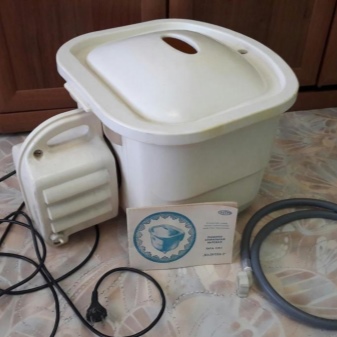
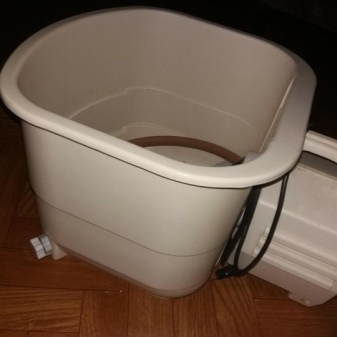
To this day, such devices have not lost their relevance - cars are often used in dachas and dormitories.
Automatic devices
In 1981, a washing machine called "Vyatka" appeared in the Soviet Union. A domestic company, which received an Italian license, was engaged in the manufacture of SMA. Thus, the Soviet "Vyatka" has many roots in common with the units of the world famous brand Ariston.
All previous models were significantly inferior to this technique - "Vyatka" easily coped with washing fabrics of various strengths, varying degrees of soiling and colors... This technique heated the water itself, carried out a thorough rinsing and squeezed it itself. Users had the opportunity to choose any mode of operation - they were offered 12 programs, including those that allow them to wash even delicate fabrics.
In some families "Vyatka" with automatic modes is still there.
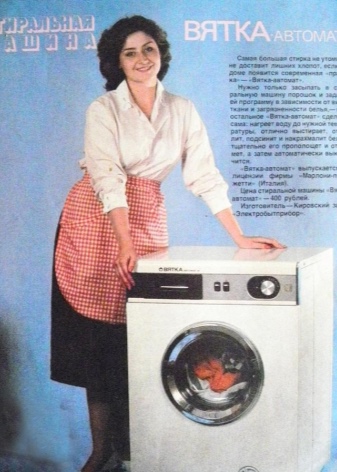
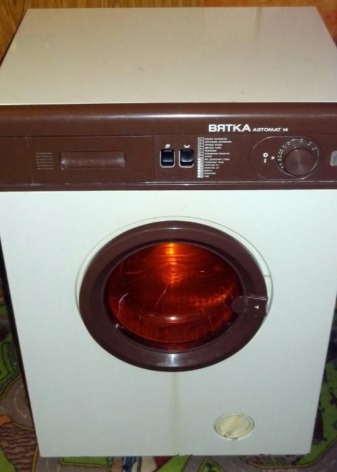
In one run, the machine turned only about 2.5 kg of laundry, so many women still had to wash by hand... So, they even loaded bed linen in several stages. As a rule, the duvet cover was washed first, and only then the pillowcase and sheets. And yet it was a huge breakthrough, which allowed leaving the machine during the wash without constant attention, without monitoring the execution of each cycle. There was no need to heat the water, pour it into the tank, watch the condition of the hose, rinse the laundry in ice water with your hands and wring it out.
Of course, such equipment cost much more than all other cars of the Soviet era, so there were never any queues for their purchase. In addition, the car was distinguished by increased energy consumption, so technically it could not be installed in every apartment. So, the wiring in houses built before 1978 simply could not withstand the load. That is why, when purchasing a product, they usually demanded a certificate from the ZhEK in the store, in which it was confirmed that the technical conditions allow the use of this unit in a residential area.
Next, you will find an overview of the Vyatka washing machine.













The comment was sent successfully.